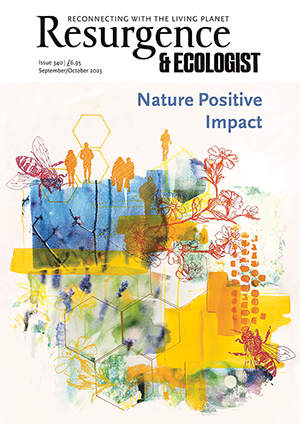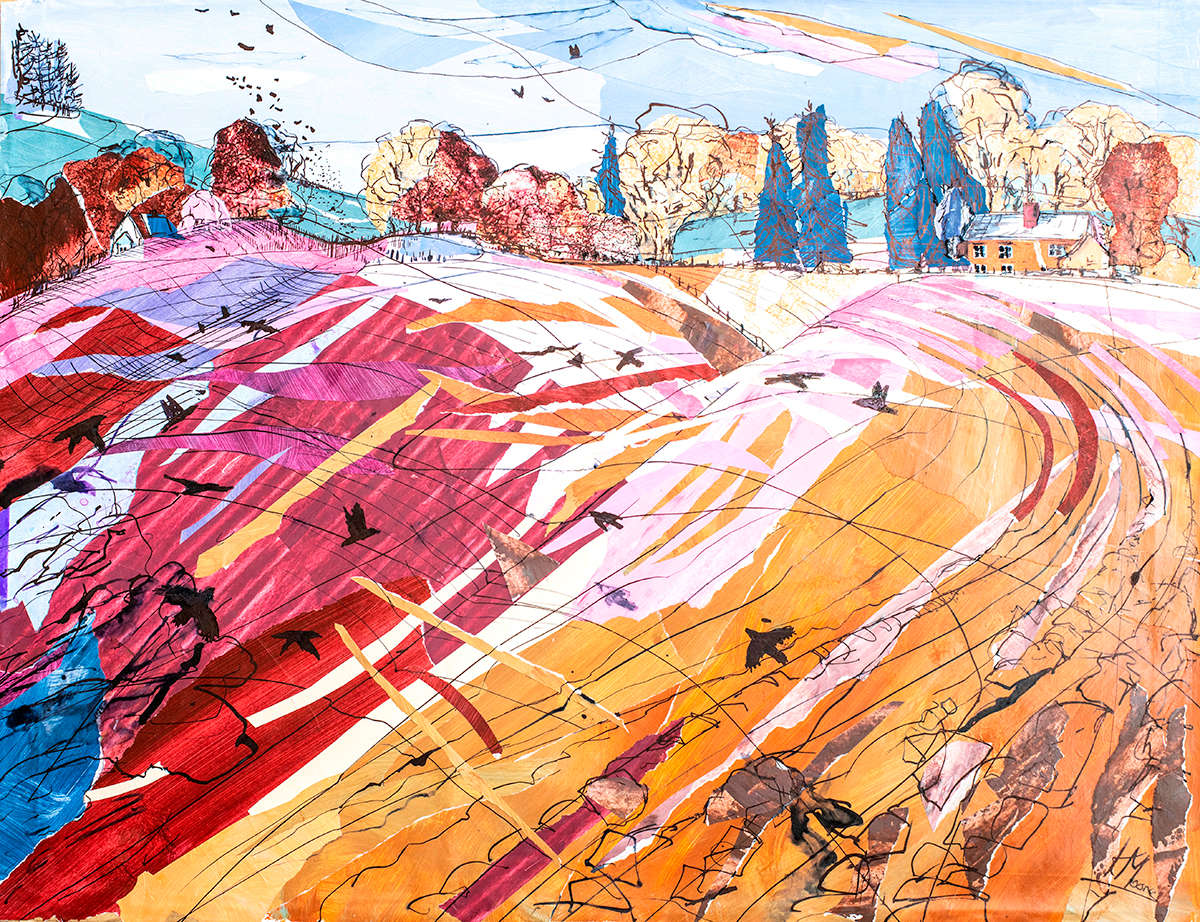I have long been interested in the idea of being able to read the signs and clues in the natural landscape in the same way one can learn a language, learn to read music, or discover how to understand a painting or a film from the symbols carefully planted by the artist or director.
I once took part in a citizen science project that involved monitoring the behaviour of small mammals in a Canadian forest, and one of the things we learned was how to recognise animals from their scat. I still remember the thrill of coming across a large, dark-coloured pat full of seeds and berries, which indicated that a black bear had recently passed that way before us.
Someone who has made a study of the whole subject is Tristan Gooley, author of The Natural Navigator, who teaches us how to find our way using only the clues we can find in the landscape. “It’s one of the fundamental human skills,” he says, “and one of the most underrated, because navigating is something we do every day.”
As a child, Gooley loved the idea of trying to find his own way up a hill. As an adult, his journeys grew more ambitious, to the point at which he became the only person to have both flown solo and sailed single-handed across the Atlantic. “The irony was that I was having to use quite a bit of kit,” he says. “So I started taking an interest in much smaller journeys and in using Nature to find my way. Now I relish deep immersion over short journeys and seeing the clues and patterns we can all miss too easily.”
These clues are something our ancestors, and many Indigenous communities today, knew and still know only too well. But some might wonder why, with all the technology we have, we need this knowledge in the 21st century. For Gooley, it’s not just about survival. It’s an art, and he believes these skills have great bene-fits. “It can do things to our neural networks which are deeply satisfying and rewarding,” he explains. “One thing we human beings are really good at is recognising patterns and then seeing more intricate pictures of what is going on. I believe this is what we evolved to do.”
Gooley uses everything – the sun, moon, stars, land, sea, weather, plants and animals – to help him find his way, and he suggests always starting your own reading of the landscape with the question, “Which way am I looking?” At dusk, heading north, you can look for the North Star to guide you. During the day, it’s possible to find south by studying the shapes of trees. “Trees need light, so they grow towards it,” he says. “Over time, if a branch and the leaves and twigs on it are harvesting more light and energy, the tree directs more resources there, so we end up with bigger, longer, stronger branches on the south side.”
According to Gooley, once we have trained ourselves to become more observant we can really start to enjoy the game of deduction. “Our brains love solving puzzles,” he says, “and there’s clear scientific support for the idea that we benefit from both deduction and time spent in Nature. Combining the two changes the way you see the world.” He offers the example of the ‘flower clock’ proposed by botanist Carl Linnaeus in 1751: the idea that you can read the time by the succession of flowers that open and close over the course of each day. (See page 43.) And he encourages us to use all our senses, citing the Greenland Inuit who navigate their way in kayaks along the coast in fog, using birdsong to identify where their home fjord is.
The shift from one season to another is a particularly fruitful time to look for signs in the landscape, and, for ecologist and keen birdwatcher Brian Eversham, bird behaviour is a good indicator that autumn is on the way. “In late summer here in the UK, you’ll see the gradual disappearance of many summer songbirds, such as warblers and nightingales,” he says. “People will also notice the swifts leaving, then the swallows and the house martins. They will go to Africa for the winter and, as they leave, the northern visitors will arrive. Thrushes, fieldfares and redwings will appear in people’s gardens, and you’ll see flocks of geese and swans flying in from the Arctic.”
Eversham, who is CEO of The Wildlife Trust for Bedfordshire, Cambridgeshire & Northamptonshire, points to another sign of autumn: the abundance of fungi. “We talk about the season of mists and mellow fruitfulness,” he says, “and the mists are important. They give us that extra humidity, which is what the fungi – which are, of course, present in the soil all year round – need so they can produce the mushrooms and toadstools.”
Gooley suggests that now is the time to look out for fly agaric (Amanita muscaria) – the classic fairytale mushroom with the red cap and white spots – and points out that if you see one it indicates that there are birch trees nearby. “Birches are pioneering trees,” he says, “so we find them at the edges of woodlands. And there you have a stepping-stone approach where you first spot the mushroom and, when you see the birch trees, you realise you’ve reached the edge of the wood: it’s a lovely, simple, ecological map.” He also illustrates just how local seasonal changes can be: “The high southern parts of a broad-leaf tree will show signs of autumn weeks before the low northern parts. So, on a beech tree, you’ll see golden-brown leaves turning to a mellower yellow as they go down, then a light green and, at the low northern parts, it could still be late summer.”
Now, that seems perfectly logical. But it’s not something I would have noticed before coming across this idea of natural navigation. And for me it’s not all about navigation: it’s just as much about noticing. Gooley adds: “We all have this deep affinity with Nature because we are part of it.”
I love the idea that on my country walks I will now know things I didn’t know before and be able to read signs I previously wouldn’t have spotted, never mind understood. I feel as if learning these new skills gives me the rudiments of a shared language that deepens my relationship with the natural world and – even though I’m ‘doing’ something to get there – brings me closer to simply ‘being’ with it. And that, as we know, can be an adventure in itself.
For more on natural navigation, visit www.naturalnavigator.com. Stephanie’s article will be the focus of the Readers’ Group discussion on 26 September 2023, 7–8pm. www.resurgenceevents.org
HERE COMES AUTMUN …
Mists and mellow fruitfulness
As summer turns into autumn we feel the air become heavier and, once we start to use all our senses, can even smell the seasonal shift.
Meadow saffron (Colchicum autumnale) begins to flower
Mainly found in central and southern England and the Welsh borders
Tawny owls become more vocal
The young birds establish their territories in September and October
Mosses and lichens come into their own
They appear more luxuriant in response to the autumn rains
The rutting season for red deer begins
The stags of our largest land mammal species battle for supremacy
Ivy (Hedera helix) starts to bloom
Insects feed on the nectar-rich flowers before going into hibernation
For more on autumn wildlife, visit www.wildlifetrusts.org/where-to-see-autumn-wildlife







